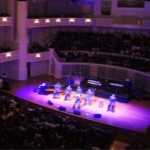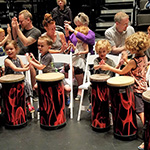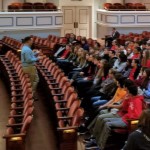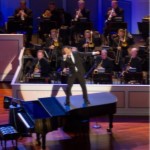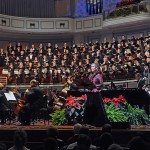Roger McGuinn: Mr. 12-String Man
7/21/2025 12AM
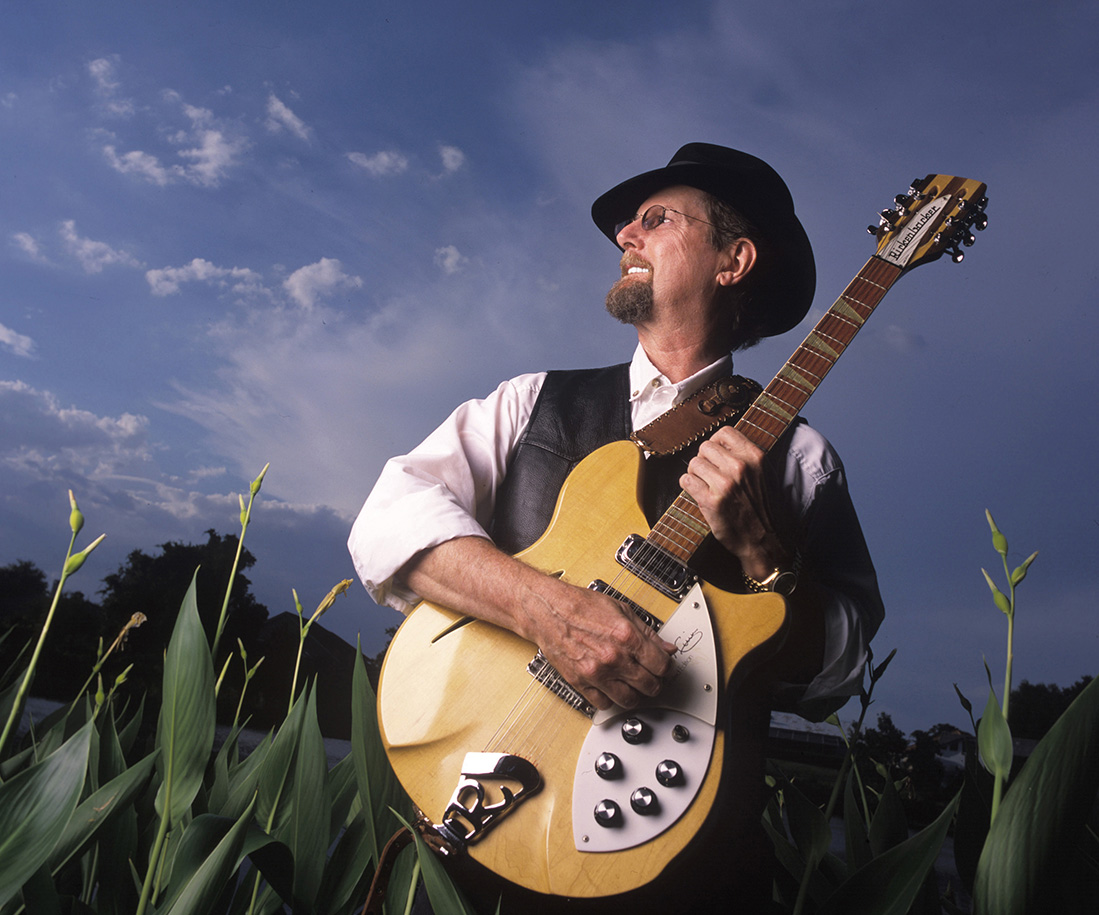
Seen here with his signature Rickenbacker 370/12 electric 12-string guitar, Roger McGuinn has been a musical innovator for six decades as the leader of the Byrds and a versatile solo artist | photo by John Chiasson.
In advance of Sept. 13 Tarkington show,
Roger McGuinn reflects on his legacy
By Scott Hall
Exactly 60 years ago, the Byrds were one of the hottest pop groups on the planet, “America’s answer to the Beatles.”
The band’s 1965 debut album, Mr. Tambourine Man, went Top 10 and the title song hit No. 1 in the U.S. and the U.K., a rare breakthrough for an American band in the British Invasion era. Their blend of danceable beats with thoughtful lyrics sung in multi-part harmony was hailed as a new genre, folk rock. The jangly sound of bandleader Roger McGuinn’s Rickenbacker electric 12-string guitar became part of the pop music vocabulary, resurfacing years later in the music of artists such as Tom Petty, R.E.M., the Bangles, the Smiths, the Cranberries and many more.
Stories and Songs
with Roger McGuinn
8 p.m. Saturday, Sept. 13
The Tarkington
Despite their roots in traditional music, the Byrds were relentlessly innovative during their decade-long run. In 1966, they audaciously tried to channel John Coltrane and Ravi Shankar in their Top 20 single “Eight Miles High,” considered the first psychedelic song to hit the mainstream and a classic example of so-called “raga rock,” influenced by Indian classical music.
Never again would the band see that level of chart success, but the exploration would continue, with McGuinn the only common thread amid a rotating cast of musicians, songwriters and strong personalities. They were among the first artists to record with a Moog synthesizer. They dabbled in jazz and what today is known as “jam band” music. They even went full-tilt into country music with their album Sweetheart of the Rodeo, now seen as a cornerstone of the country rock wave that would culminate a decade later in the massive success of the Eagles.
“It was a total bomb when it came out,” McGuinn says of the 1968 release. “I don't think it's the worst-selling Byrds album, but I think it was the second-worst-selling one. The problem was it fell between the cracks. The rock people didn’t like country, and the country people didn't like rock, and so we were just trying to be sincere and paying tribute to some great country songs.”
While many contemporaries have passed on or long since retired, McGuinn has continued to record and tour, both solo and in various combinations with former bandmates. On his current “Stories and Songs” tour, he performs alone on banjo and an assortment of guitars, sharing anecdotes from his long and colorful career.
McGuinn began playing folk songs as a teen in Chicago, which led to stints with the Chad Mitchell Trio and pop star Bobby Darin, who was incorporating folk music into his act.
“He’d go out and do his rock ’n’ roll stuff, and then he’d invite me up and we’d do kind of a Smothers Brothers comedy routine with folk songs in the middle,” McGuinn recalls. “I played the five-string banjo and the 12-string guitar and we had a lot of fun.”
Darin opened a music publishing company in New York’s legendary Brill Building and hired McGuinn as a songwriter, but sitting in a 6-by-10 cubicle every day proved unfulfilling. McGuinn – known then by his given name, Jim – found work briefly as a studio musician, recording with artists including Paul Simon and Judi Collins before heading to Los Angeles, where the Byrds would form over a mutual love of folk music, Bob Dylan and the Beatles.
Soon, they found themselves in a friendly rivalry with those same artists, as well as the Beach Boys. All were experimenting with song structures, guitar and vocal styles, and new recording techniques, learning from one another and trying to top themselves with each new release.
“We were all kind of trading licks back and forth,” McGuinn says. “That was happening for a couple of years there. It was a real artistic renaissance, I think, the early ’60s and mid-’60s.”
Among his co-founders was David Crosby, later of Crosby, Stills and Nash. By his own admission, Crosby was notoriously opinionated and difficult to deal with, and “everybody will corroborate that,” McGuinn says with a laugh. He and bassist Chris Hillman kicked Crosby out of the Byrds, although McGuinn later did a couple tours with his ex-bandmate.
“We got along OK (in later years),” he says of Crosby, who played Allied Solutions Center in 2017 and died in 2023. “We were hanging out on Twitter, which is now X, and it was friendly for a long time, and then I said something that bugged him and he blocked me on Twitter.”
After the departures of original members Crosby, Gene Clark and Mike Clarke, McGuinn and Hillman recruited yet another lead guitarist, the legendary Clarence White, and another singer-songwriter, Gram Parsons. Parsons contributed greatly to the country sound of the Sweetheart of the Rodeo album but soon left the band, after advocating at one point for McGuinn to be replaced.
“Clarence and I were really good friends and we interacted quite a bit, so it wasn't really competition,” McGuinn says. “Now, Gram Parsons, on the other hand, he wanted to fire me and get a steel guitar instead. … He was a rich kid and he thought he owned the world, really. … not to say that we didn't have some good times. You know, we’d drink beer and play pool and ride motorcycles and do kind of redneck stuff.”
In 2018, Hillman and McGuinn reunited for an acclaimed Sweetheart 50th anniversary tour, tapping noted Byrds fans Marty Stuart and His Fabulous Superlatives as their backing band. McGuinn conceived the idea as a boost for Hillman, who had suffered home damage in a California wildfire and was also mourning the death of Petty, who had produced his most recent album.
“It was fun. Marty's really great to play with,” McGuinn says. “I told Chris I was doing it for him, to kind of lift his spirits.”
Long fascinated by emerging technology, McGuinn was an early adopter of digital recording. In November, he’ll mark the 30th anniversary of Folk Den, a website where he uploads a classic folk song each month. The site now features hundreds of songs available for free downloading, along with lyrics, chord charts and commentary. With little profit potential to support its preservation, he says, historic music is in danger of being lost forever.
“Traditional songs are getting sent to the dustbin of history,” he says. “I still love folk music.”



